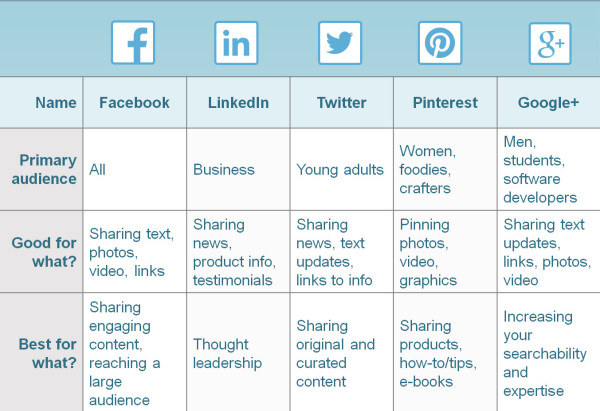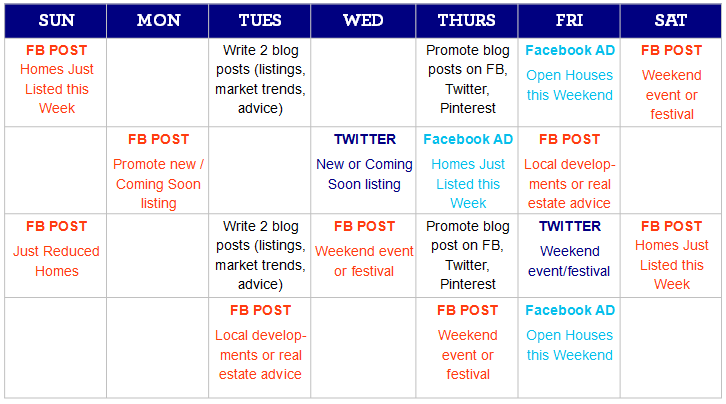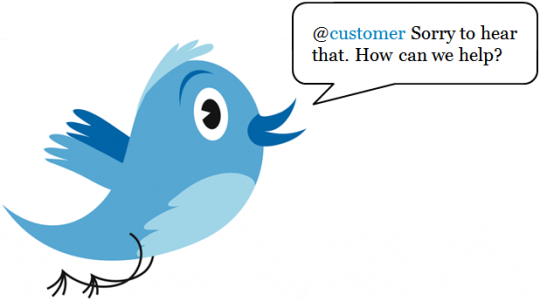Summary: A social media marketing plan is not as intimidating as people make it out to be. You need to be highly focused on who your customers are, clearly define your service offerings, the channels you will use to wow your customers, and how you’re planning to wow them with a strategic marketing plan.
Reading Time: 5 minutes
Key Points
» Clearly define your business goals so you can formulate the right plan.
» Strategically position yourself on the most relevant social media platforms available.
» The right content at the right time will have a greater impact on your marketing efforts.
As we recognize how important social media is to grow our business, is important to also recognize the importance of having an effective social media marketing plan that outlines the right strategy to grow our business.
Need help putting together a social media marketing plan? Check out the 30-days social media marketing plan from SproutSocial.
As a social media marketer myself, I recognize how massively important it is to have an effective social media marketing plan, regardless of the industry you’re in or the size of the company.
The fact is that social media has been recognized as a vital channel for marketing, and although social media seems to be everywhere these days, it is actually pretty new in terms of being used for business.
For the businesses that took a chance on social media at the beginning, they have enjoyed many of the riches of being a first adopter, sometimes even being the first one in their industry.
But, where do we start?
How do we put together a marketing plan that can be easily executed without taking too much time away from running our business?
Don’t worry, in this article, I will cover a list of things you need to put together to generate an effective social media marketing plan.
If you’re new to this and expect to see results from a few blog posts and random updates, you might find the whole endeavor very disappointing.
Serious marketers know that in order to harness the full potential of social media, you have to incorporate at least these three elements:
- Listen to your audience (your customers)
- Share relevant messages (what they want to read/learn)
- Enable them to share your message (allow them to spread the word)
Social Media Marketing Plan – The key to achieve great marketing results, produce and share amazing content!
Ever heard that saying that goes “failing to plan is planning to fail?”
It’s very true when it comes to marketing, creating a well-detailed social media strategy is just as crucial as having a rock-solid business plan.
In order to attract, engage and ideally convert fans and followers into customers, you need to identify what your company’s goals are, and how you want to serve your customers.
1. Know exactly what your business goals are
What business goals are you trying to reach? Are you trying to increase website traffic, newsletter opt-ins, and social media shares?
You need to know exactly what your business goals are and they need to be specific before you can craft your social media marketing plan.
Your goals need to be specific, measurable, attainable, realistic, and time-bound. Here are some examples of poorly defined and well-defined goals:
- Good goal: Increase website traffic by 15% by the end of this month.
- Bad goal: Increase website traffic
- Bad goal: Increase social media shares.
- Good goal: Increase social media shares on Twitter by 50% by the end of this month.
- Bad goal: Launch a new ebook.
- Good goal: Launch a new ebook about [subject] 2 months from now and promote it to my email list first.
Remember: If you’re just winging it, your audience will know right away, so take the time to figure out what your business goals are and make sure they are well-defined.
2. Know who will manage all social media accounts
If you’re bootstrapping your company, then you’re probably the one running all your social media accounts.
There’s nothing wrong with this, in fact, I recommend you manage your own social media accounts.
Why?
Because you can personalize every message, just remember that we all want to connect with people, not brands.
TIP: If you really want to learn from the master of this, check out Gary Vaynerchuk on Instagram, or any of his social media channels.
Gary has a team of highly skilled creative minds, and although I’m sure they do a lot of the legwork, Gary himself is the one that you see on videos, you hear on audio, you can even tell from his writing.
He’s just so authentic that his brand cannot be mistaken, and this is what you want to strive towards, uniqueness and authenticity.
If you’re a larger company, then you could outsource your social media management duties to someone in your team, just make sure that person clearly understands and believes in your business goals.
3. Choose the most relevant social media platforms
If you ask Pat Flynn from the SmartPassiveIncome.com blog about which social media platform you should use, he will simply tell you, “be everywhere!”.
Yes, being on multiple platforms increases brand awareness and ultimately helps drive more traffic to your website, but if your message is suffering because you don’t have enough time to manage multiple platforms, it is actually going to hurt your brand.
- Source: Constant Contact Blog: How to Create a Social Media Posting Schedule
Focus on mastering the most relevant social media platforms first, then test other platforms depending on where your customers are.
If your business is creating cool arts and crafts, your most relevant social media platforms would be Etsy, Pinterest, and Instagram.
Why?
Because these platforms are visual-oriented, which is performed for you to showcase your cool ideas.
If you’re a business consultant, your best social media platforms are going to be LinkedIn and Twitter.
Once you have mastered those, you should put together a few video presentations and upload them to YouTube to showcase your expertise, maybe record yourself during a live speaking show.
Remember: you don’t want to spread yourself out so thin that you actually end up hurting your brand because of the lack of activity on those platforms.
Whichever platform you select, make sure it is a platform that your customers are on, and that you know how to use it well enough to build your company’s brand and engage your customers to create and nurture relationships with them.
Of course, as your business grows, you want to explore other social media platforms in order to spread your brand across the web.
4. How frequently should your updates be?
The frequency of your updates depends on the kind of business you’re running (product or service) and to what social media platform.
If you sell physical products, posting a new article every week is not the right strategy.
Instead, focus on posting to social media platforms such as Facebook, Instagram, Twitter, etc., which are great for visuals and also to announce flash sales.
- Source: The Investor Insights
Above you can see a sample social media posting schedule for real estate investors by The Investor Insights.
If your business is to provide information to consumers or businesses, then posting updates regularly, say 3-5 times a day on different social media platforms, would probably be a more effective marketing strategy.
Remember: Your customers use different social media platforms throughout the day, learn about the best times to post updates on those channels to maximize the effectiveness of your social media marketing plan.
5. Identify the types of content to produce
The type of content to post will depend on your business type, your specific goals, and the social media platform you’re posting to.
For instance, Pinterest and Instagram are inherently visual, so striking, memorable images detailing your products and services would be ideal for your marketing strategy.
Twitter would be better to share links to your product pages, even share coupon codes.
When using Twitter, try to keep a balance between tweets and re-tweets.
However, if your updates are just text, Facebook can also be a great source for brand building, especially if you’re posing a question or giving out relevant information.
Curate a diverse mix of content (photos, links, tips, short videos, thoughtful questions, etc.) across different platforms in order to keep things fresh and interesting.
6. Customize your updates
As you’re growing your business, is easy to rely on many of the tools out there to automate your updates, we’re all guilty of this sometimes.
However, you should customize your updates based on the best practices for each of the social media platforms.
For example, Twitter limits how much content you can write, therefore you need to craft a captivating message that gets people clicking on the link.
For Facebook, you have a lot more room to write, so a carefully written excerpt including your keywords and a link will work great.
Take the time to craft relevant updates on all social media platforms, even if is the same message.
7. Social media platforms for customer service and feedback
Social media has enabled consumers like you and me to express our individual opinions about the products and services we use on a daily basis.
Generally, we know that if you’re dissatisfied with a product or service, social media platforms are probably the fastest and easiest way to complain and actually get feedback.
Social media platforms are also excellent channels to respond to customer questions and complaints, order status inquiries, and more.
Think about this for a minute, if you’re monitoring your brand and specific keywords on social media, you can respond to customer complaints right away, and out that human touch to your brand.
Tip: use TagBoard to monitor hashtags on all social media platforms in real-time.
Use this to get in the conversation, exploit those opportunities to put yourself in front of a customer, and do it!
8. Convert followers into customers
If your goal is to build brand awareness, even if you’re using quotes on your updates, the ultimate goal is to convert your followers (visitors) into paying customers.
It’s entirely up to you to convert those leads. One of the best ways to go about converting leads is to implement a cross-platform contest that integrates all the popular platforms and perhaps offers sweepstakes that resonate well with the audience and draws in potential customers.
For instance, in order to drive customers to your online store, you could send a simple tweet that describes an ongoing contest on your Facebook account and drop a link to the rules of the contest and the entry form on your online store.
Tip: Don’t just rely on your social media updates to find customers, leverage the paid ads programs on those platforms as well.
For example, Facebook ads are a simple, affordable way to expand your fan base, boost engagement and collect sales leads.
9. Measure your social media marketing efforts
It’s very important to make sure you always track your marketing metrics so as to establish which tactics are working and which are not.
Some platforms come with their own metrics; Facebook, for instance, gives you administrator access where you can check out page insights data and use the data to evaluate what’s working and plan your future posts.
LinkedIn offers similar analytics which is essential for business pages.
Google Analytics can be used to measure the effectiveness of social media campaigns and see how your strategy’s driving your traffic to your online store.
Tip: Use SocialMention and TweetReach to measure how specific keywords (topics) are performing on various social media platforms.
10. The biggest mistake to avoid
You can’t afford NOT to have a social media marketing plan, so create one and stick to it.
Remember, social media is constantly evolving and in order to stay ahead, you have to be prepared to adapt and redefine your strategy as needed.
If you do this every few months you will identify which tactics are redundant and in the process work out the best plan for your business.
Most organizations begin their social efforts by listening and engaging with their customers across different platforms, but at some point, they have to look at the staffing required to carry out an effective campaign and ask what it is they’re really getting from social interaction.
Remember: In order to maintain a social business strategy that helps your company grow consistently month after month, you need to have an effective social media marketing plan in place.
Make sure to dedicate the required resources to get your plan implemented immediately.








